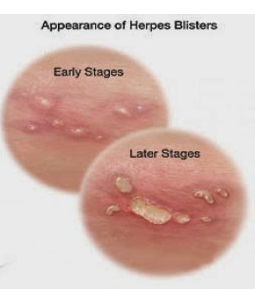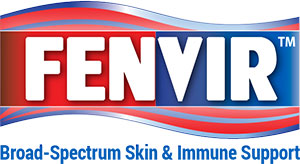 About 1 in 6 Americans (16.2 percent) between the ages of 14 and 49 is infected with the simplex virus type 2 (HSV-2), according to a national health survey released today by the Centers for Disease Control and Prevention. HSV-2 is a lifelong and incurable infection that can cause recurrent and painful genital sores and other rashes. Research into testing and vaccination for both the oral and genital forms of the HSV simplex virus continues, but the prevalence and evolution of the virus add to the challenge of this task. Thomas Quinn, MD, a professor of medicine at Johns Hopkins University School of Medicine who is also an international researcher with the NIH’s National Institute of Allergy and Infectious Diseases, has been working to analyze the genetic diversity of HSV-2 strains from around the world. Dr Quinn has been conducting research in East Africa for 30 years and is a senior author of 2 studies on sequencing the HSV genome that appeared in a recent issue of the Journal of Virology. “HSV was first genetically sequenced using only European patient strains, and the resulting diagnostic test was developed to identify sequences common to those strains” according to a press release from Thomas Quinn, MD. Scientists have long suspected that the glycoproteins present in African patients who are HSV-positive might differ from those in patients in the United States and Europe.
About 1 in 6 Americans (16.2 percent) between the ages of 14 and 49 is infected with the simplex virus type 2 (HSV-2), according to a national health survey released today by the Centers for Disease Control and Prevention. HSV-2 is a lifelong and incurable infection that can cause recurrent and painful genital sores and other rashes. Research into testing and vaccination for both the oral and genital forms of the HSV simplex virus continues, but the prevalence and evolution of the virus add to the challenge of this task. Thomas Quinn, MD, a professor of medicine at Johns Hopkins University School of Medicine who is also an international researcher with the NIH’s National Institute of Allergy and Infectious Diseases, has been working to analyze the genetic diversity of HSV-2 strains from around the world. Dr Quinn has been conducting research in East Africa for 30 years and is a senior author of 2 studies on sequencing the HSV genome that appeared in a recent issue of the Journal of Virology. “HSV was first genetically sequenced using only European patient strains, and the resulting diagnostic test was developed to identify sequences common to those strains” according to a press release from Thomas Quinn, MD. Scientists have long suspected that the glycoproteins present in African patients who are HSV-positive might differ from those in patients in the United States and Europe.
“It really can’t predicted when there will have a safe and effective vaccine against HSV-2,” Dr Quinn told Contemporary OB/GYN in an email. “Several vaccines have been made and evaluated but did not demonstrate high efficacy in the volunteers. Another large trial is currently under way and we will have to see how effective that will be.
“Developing an effective vaccine is tough due to the high frequency of HSV-1 infections in many people that seem to interfere with the overall immunogenicity of the vaccine,” he explained. “But researchers’ must keep on trying with new vaccines that are developed thanks to the new molecular information on HSV”
The findings, presented at the National STD Prevention Conference, indicate that HSV remains one of the most common sexually transmitted diseases (STDs) in the United States.
The new estimate, comes from CDC’s National Health and Nutrition Examination Survey (NHANES), a nationally representative survey of the U.S. household population that assesses a broad range of health issues.
The study finds that women and blacks were most likely to be infected. HSV-2 prevalence was nearly twice as high among women (20.9 percent) than men (11.5 percent), and was more than three times higher among blacks (39.2 percent) than whites (12.3 percent). The most affected group was black women, with a prevalence rate of 48 percent.
As with other STDs, biological factors may make women more susceptible to HSV-2 infection. Additionally, racial disparities in HSV-2 infection are likely perpetuated because of the higher prevalence of infection within African-American communities, placing African-Americans at greater risk of being exposed to herpes with any given sexual encounter.
“This study serves as a stark reminder that HSV remains a common and serious health threat in the United States. Everyone should be aware of the symptoms, risk factors, and steps that can be taken to prevent the spread of this lifelong and incurable infection,” said Kevin Fenton, M.D., director of CDC’s National Center for HIV/AIDS, Viral Hepatitis, STD, and TB Prevention. “Doctor’s are particularly concerned about persistent high rates of herpes among African-Americans, which is likely contributing to disproportionate rates of HIV in the black community.”
Research shows that people with HSV are two to three times more likely to acquire HIV, and that HSV can also make HIV-infected individuals more likely to transmit HIV to others. CDC estimates that over 80 percent of those with HSV-2 are unaware of their infection. Symptoms may be absent, mild, or mistaken for another condition. And people with HSV-2 can transmit the virus even when they have no visible sores or other symptoms.
“Many individuals are transmitting herpes to others without even knowing it,” said John M. Douglas, Jr., M.D., director of CDC’s Division of STD Prevention. “People can’t afford to be complacent about this disease. It is important that persons with symptoms suggestive of HSV—especially recurrent sores in the genital area—seek clinical care to determine if these symptoms may be due to HSV and might benefit from treatment.”
Although HSV-2 infection is not curable, there are effective medications available to treat symptoms and prevent outbreaks. People with known HSV infection should avoid sex when HSV symptoms or sores are present and understand that HSV-2 can still be transmitted when sores are not present. Effective strategies to reduce the risk of HSV-2 infection include abstaining from sexual contact, using condoms consistently and correctly, and limiting the number of sex partners.

